|
|
|
|
HOME
|
US Navy -
ships
|
US Navy - air
units
|
USMC - air
units
|
International
Navies
|
Weapon Systems
|
Special Reports |
|
|
|
|
|
|
|
Royal Navy - Guided Missile DestroyerD 92 HMS Liverpool |
|
|
|
|
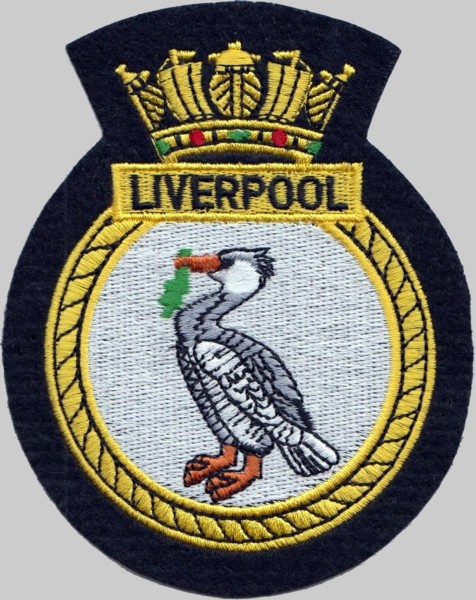 |
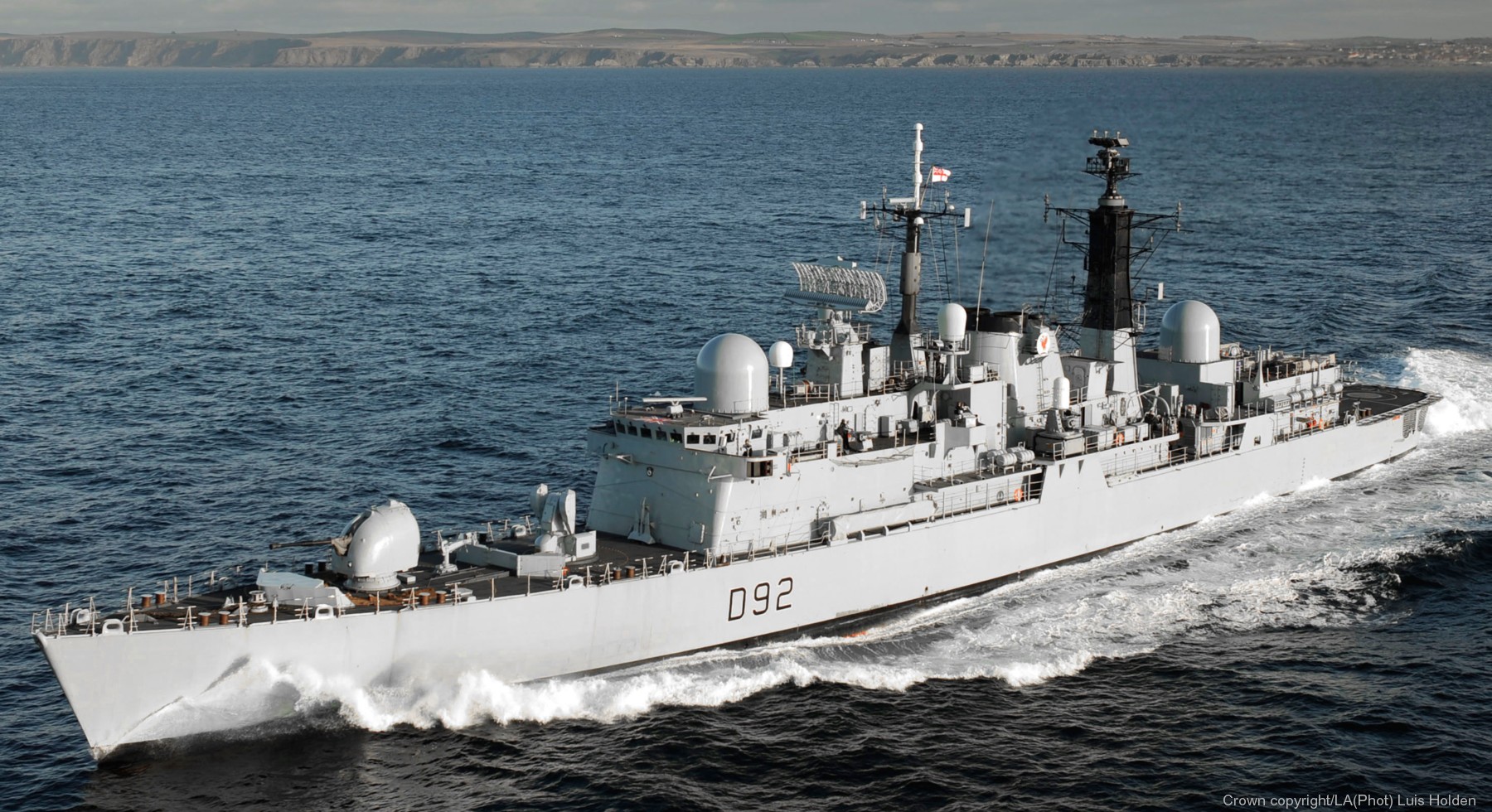 |
|
|
|
|
Type,
class: Guided Missile Destroyer; Sheffield / Type 42
class (Batch 2) Builder: Cammell Laird & Co. Ltd., Birkenhead, U.K. STATUS: Awarded: March 1, 1977 Laid down: July 5, 1978 Launched: September 25, 1980 Commissioned: July 1, 1982 Decommissioned: March 30, 2012 Fate: scrapped in Turkey Homeport: - Namesake: City of Liverpool, England Ships Motto: Technical Data: see INFO > Sheffield / Type 42 class Guided Missile Destroyer |
|
|
|
|
ship images |
|
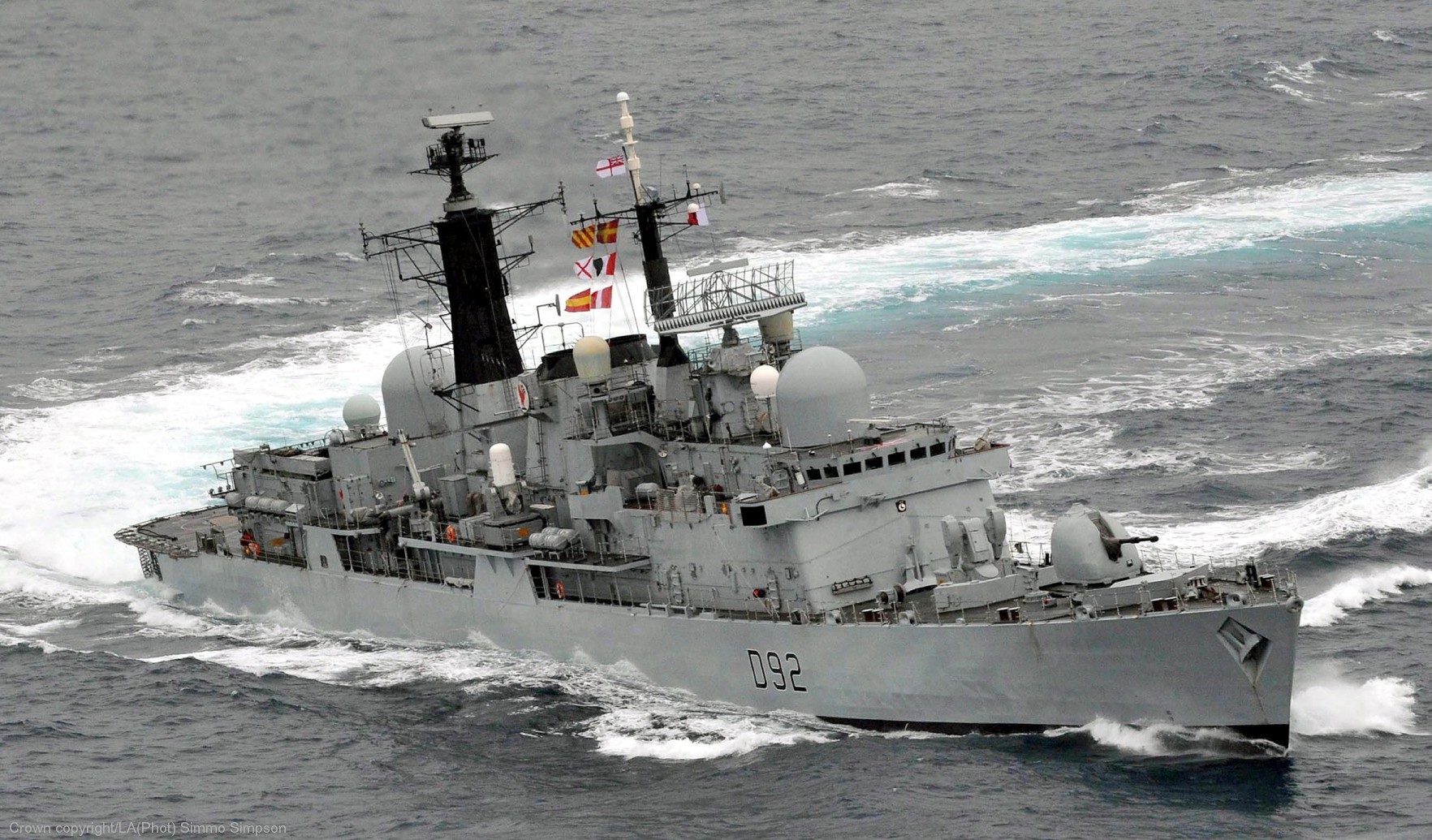 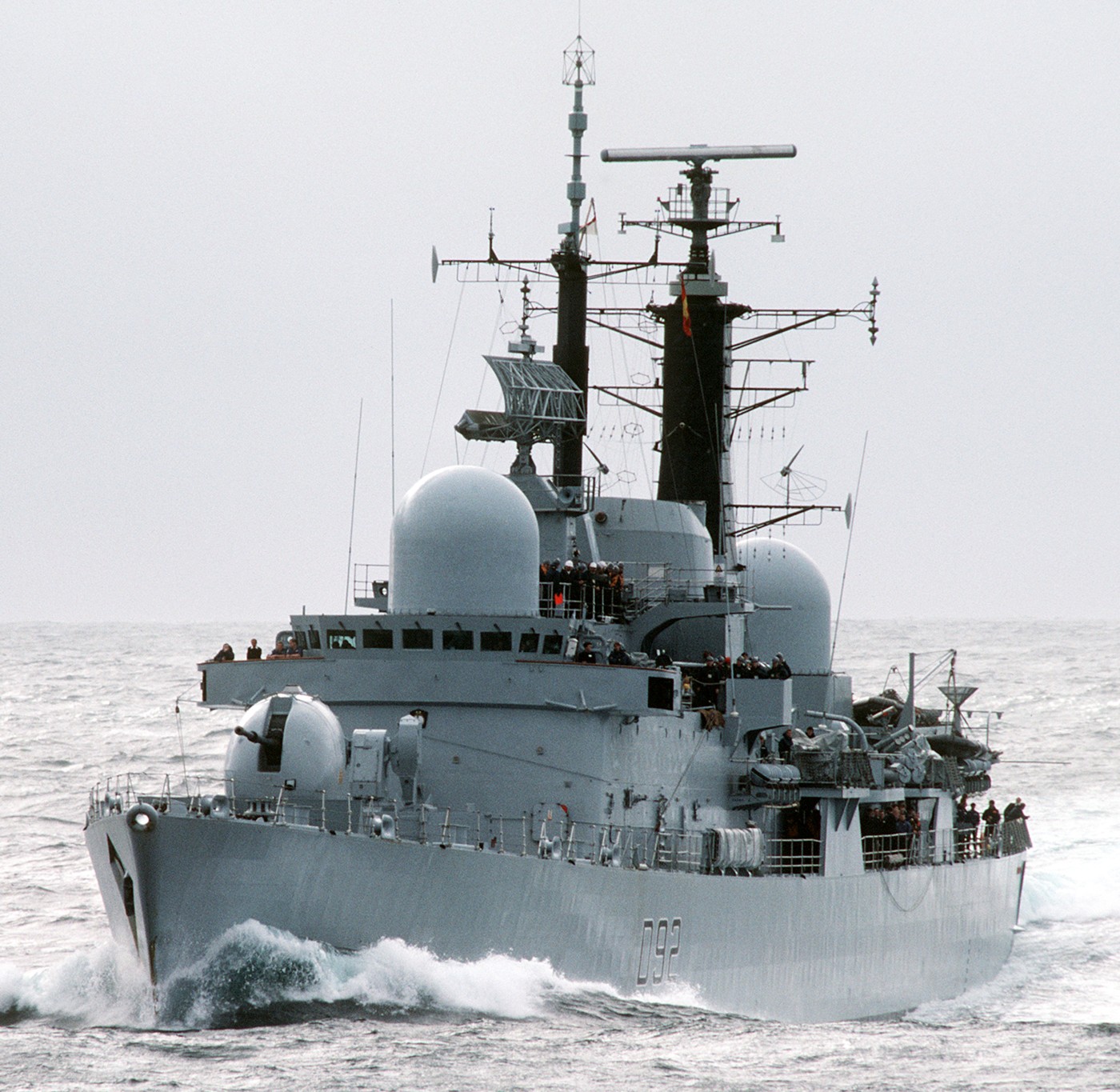 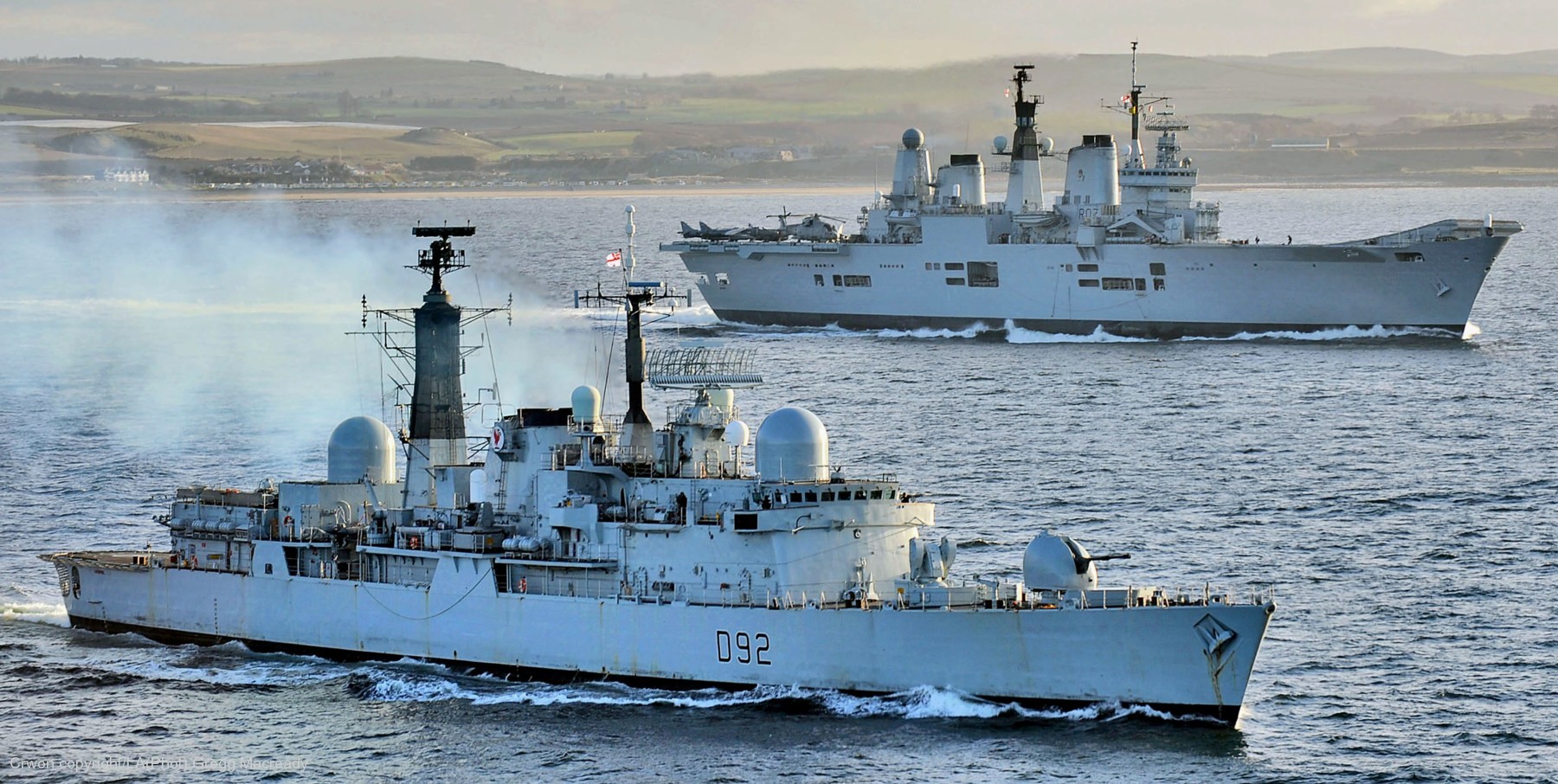 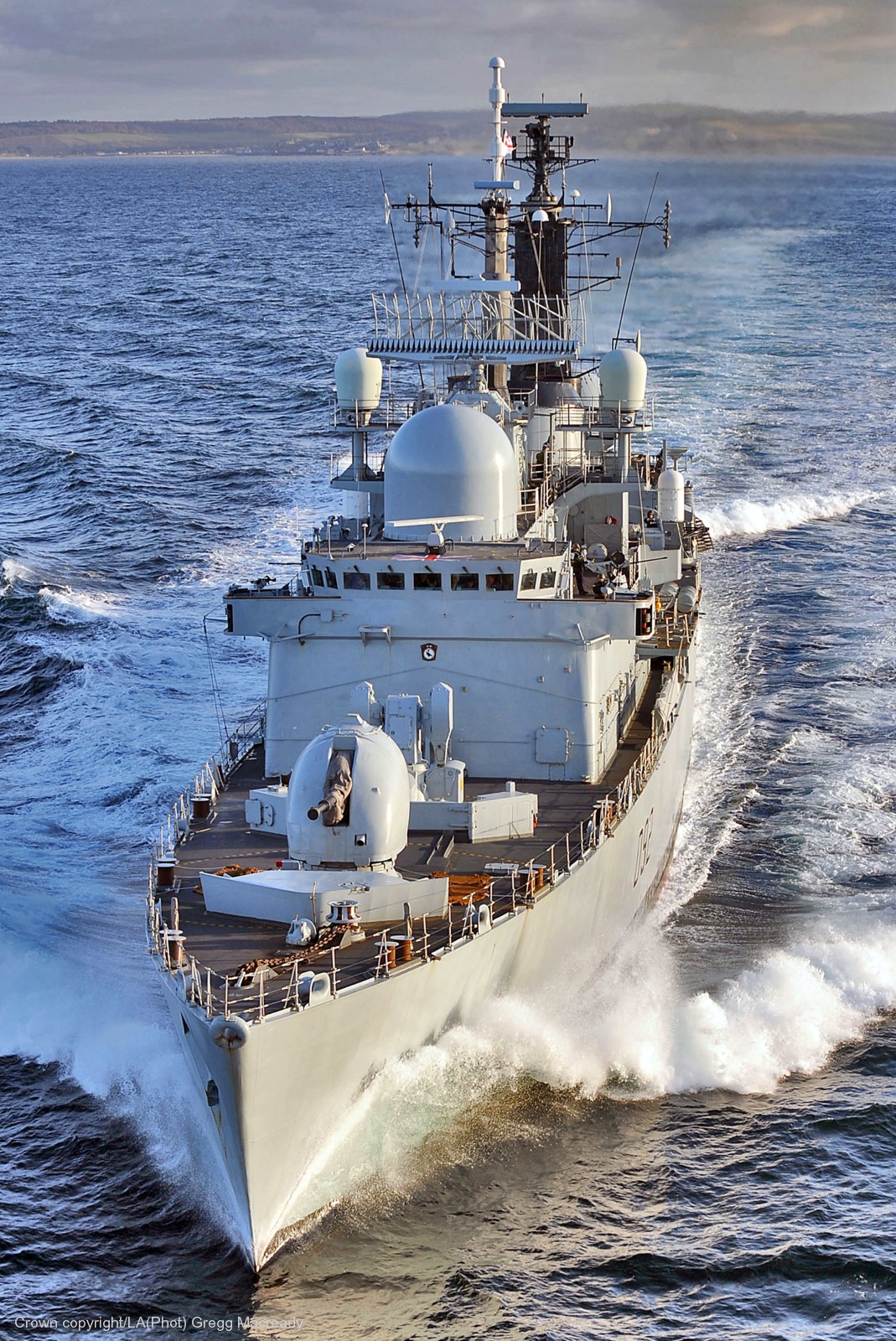 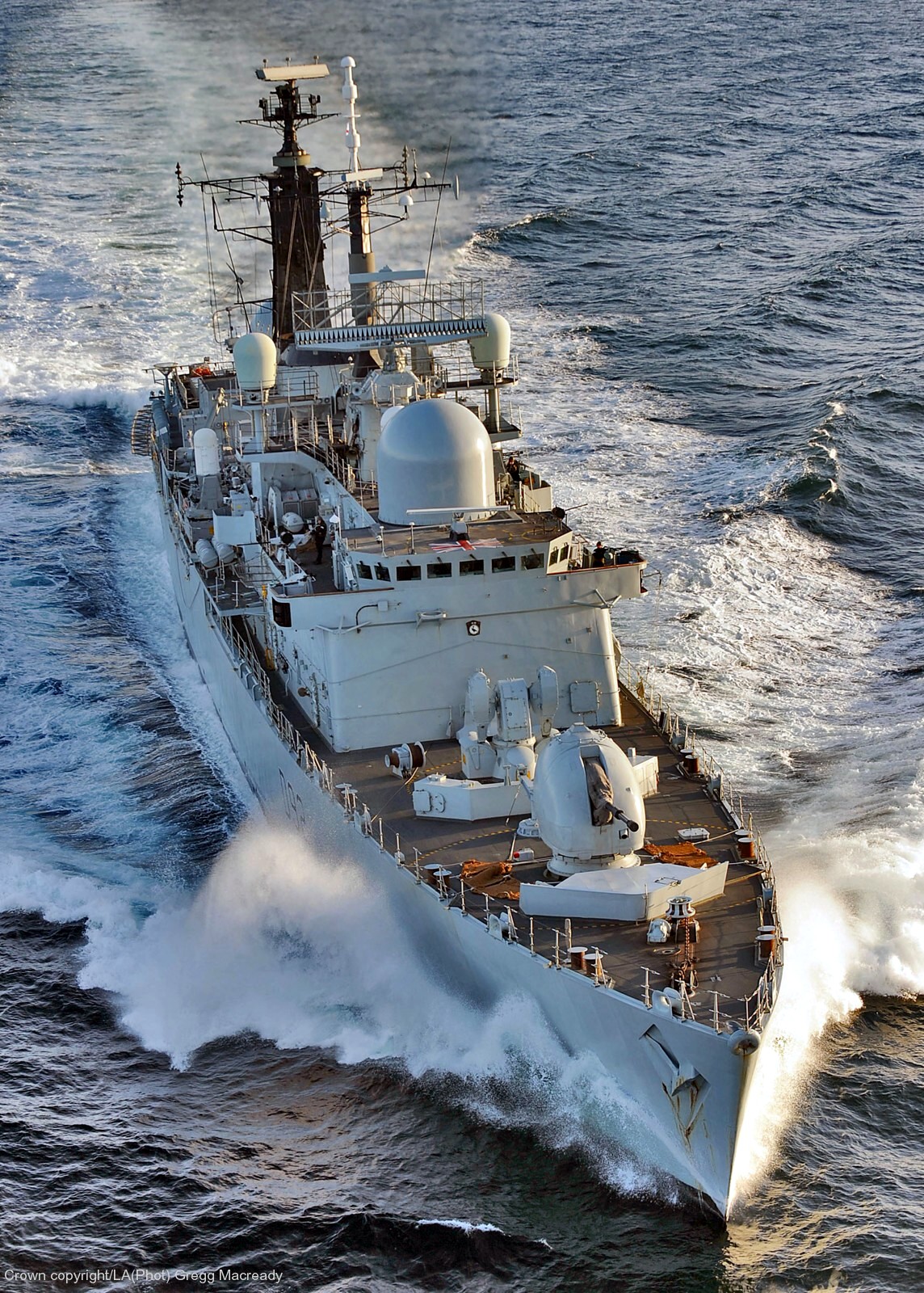  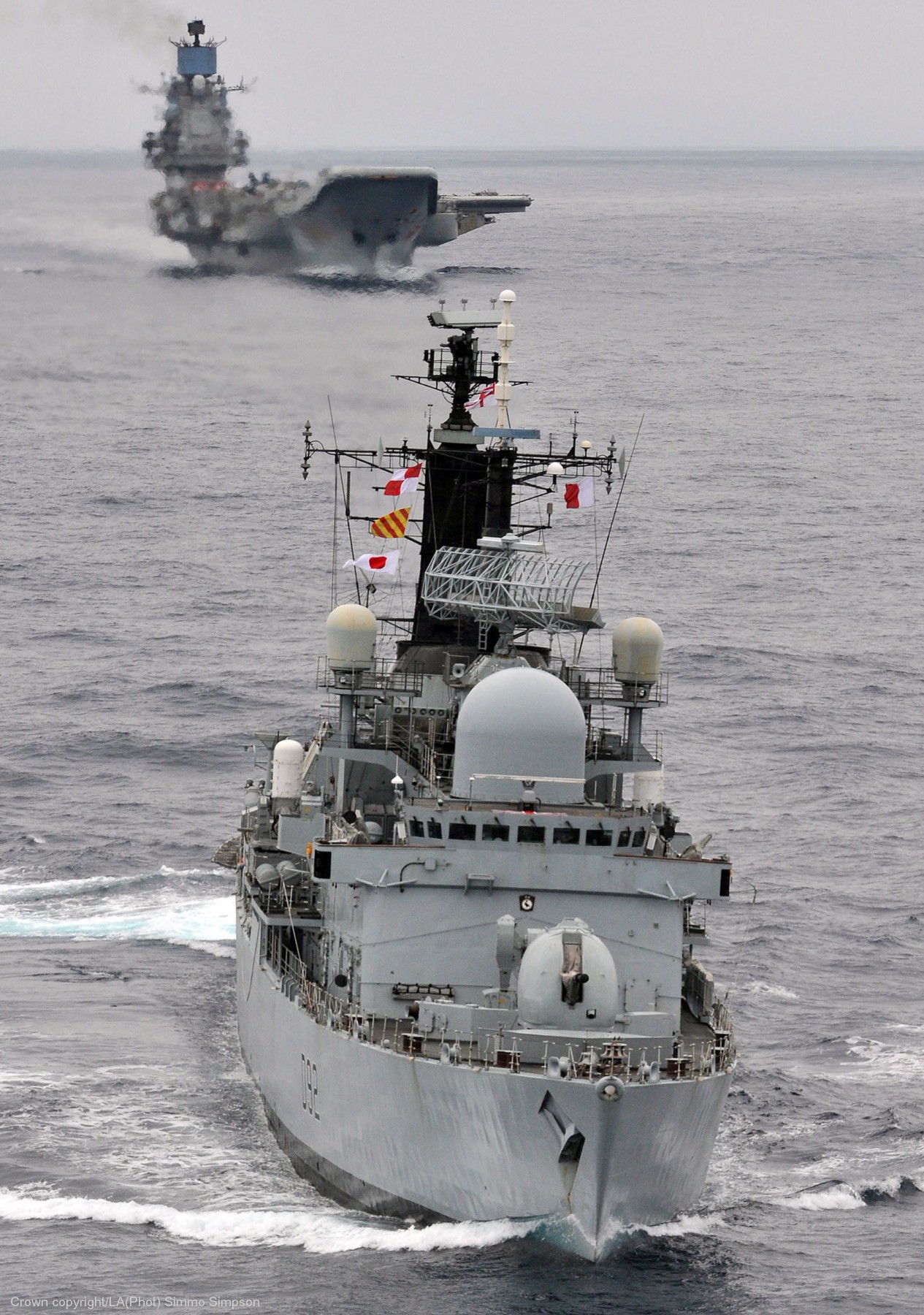 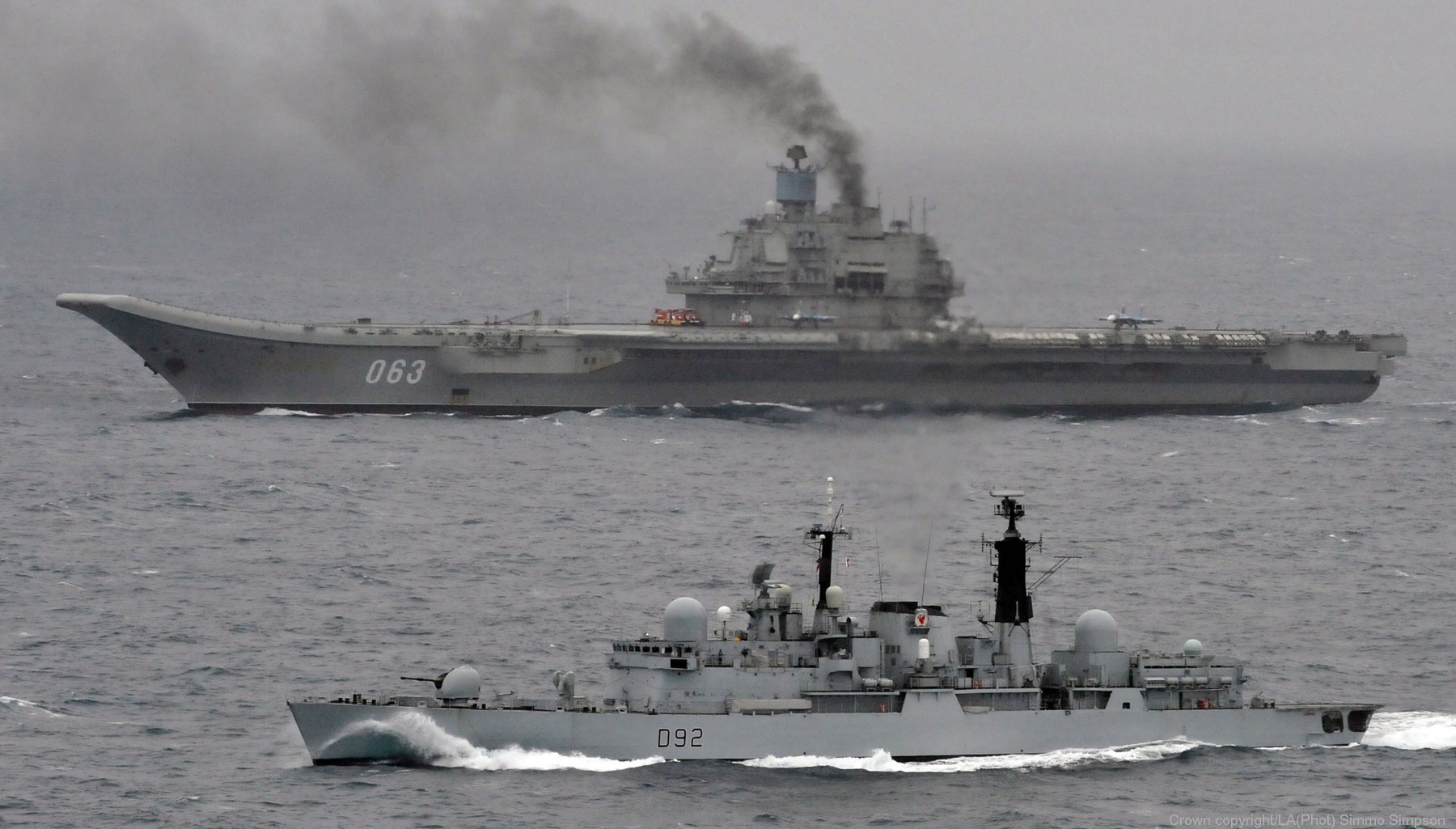 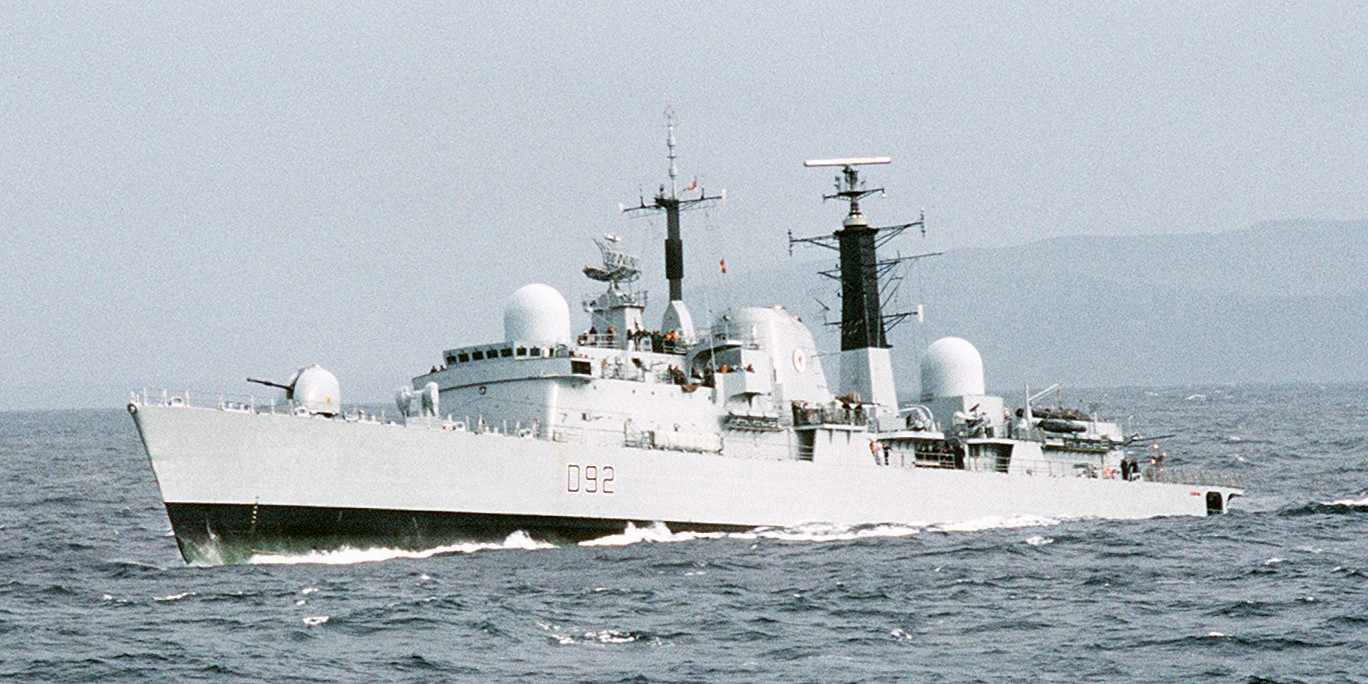 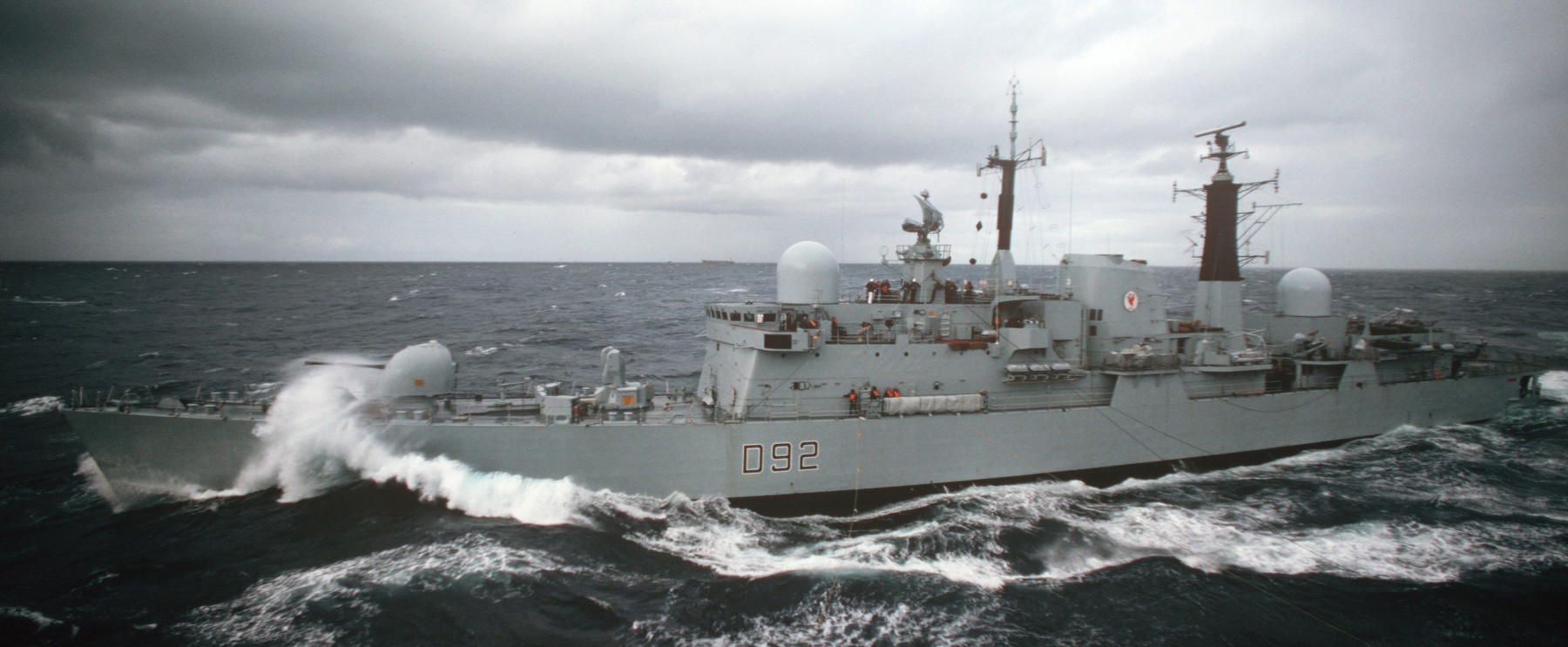 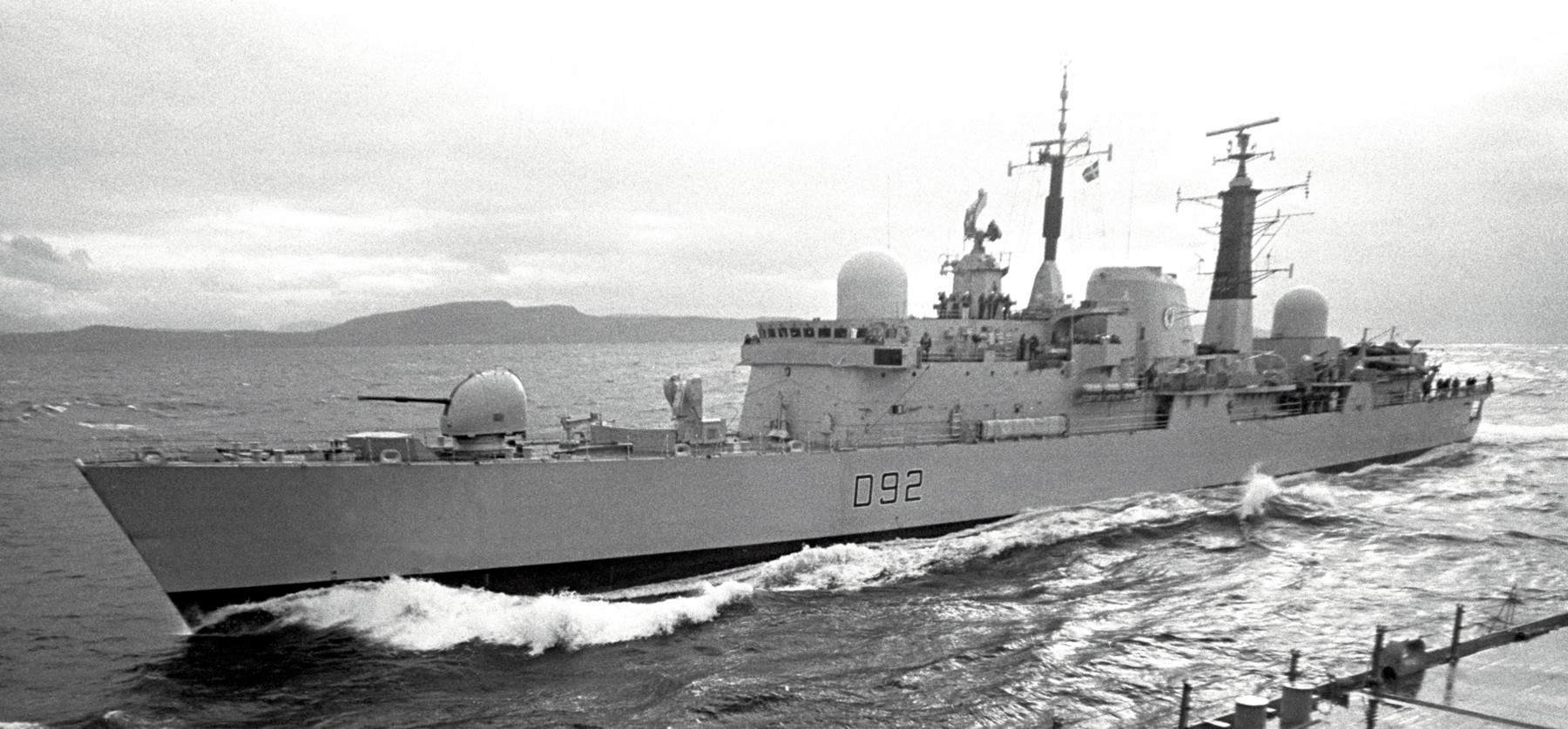 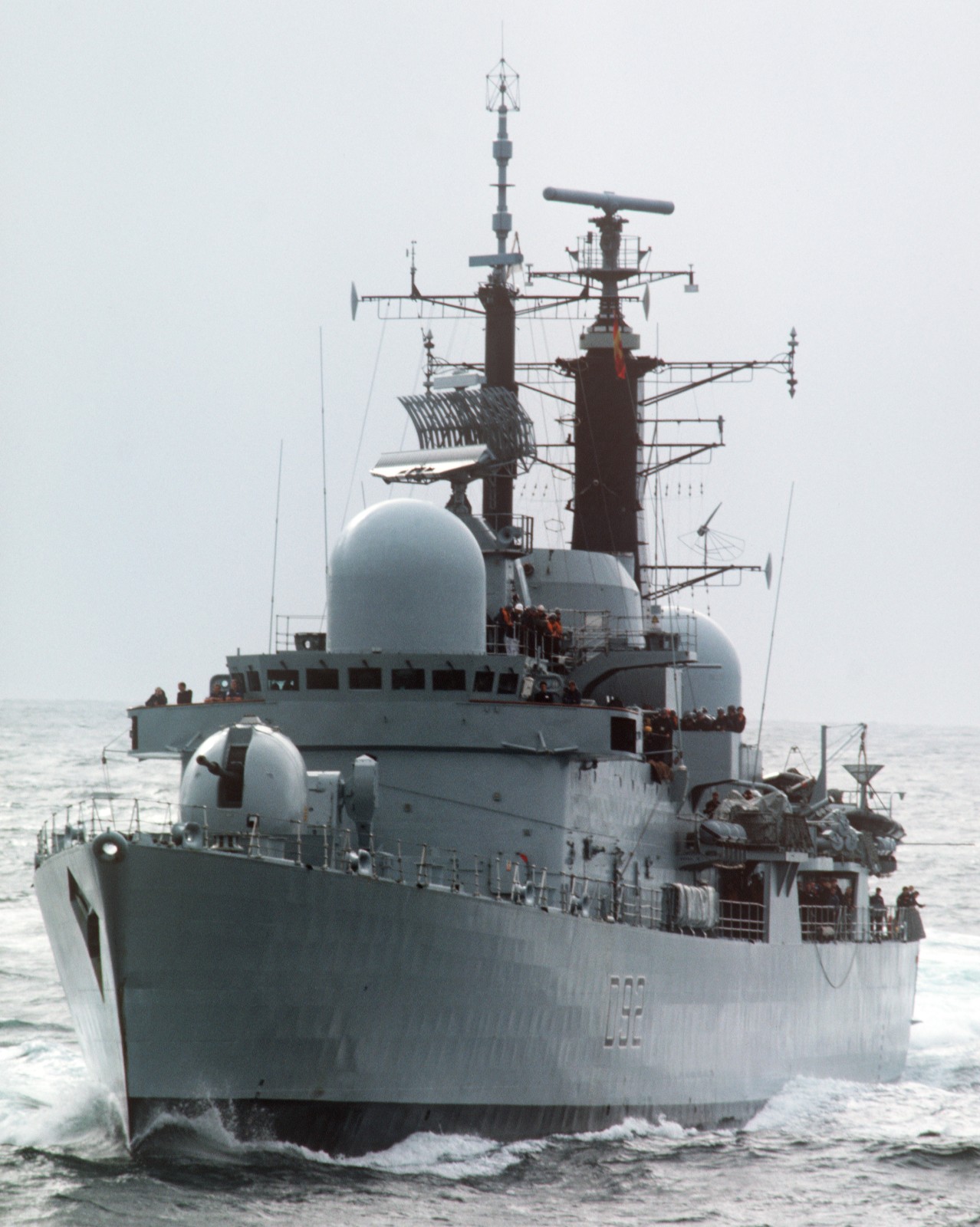 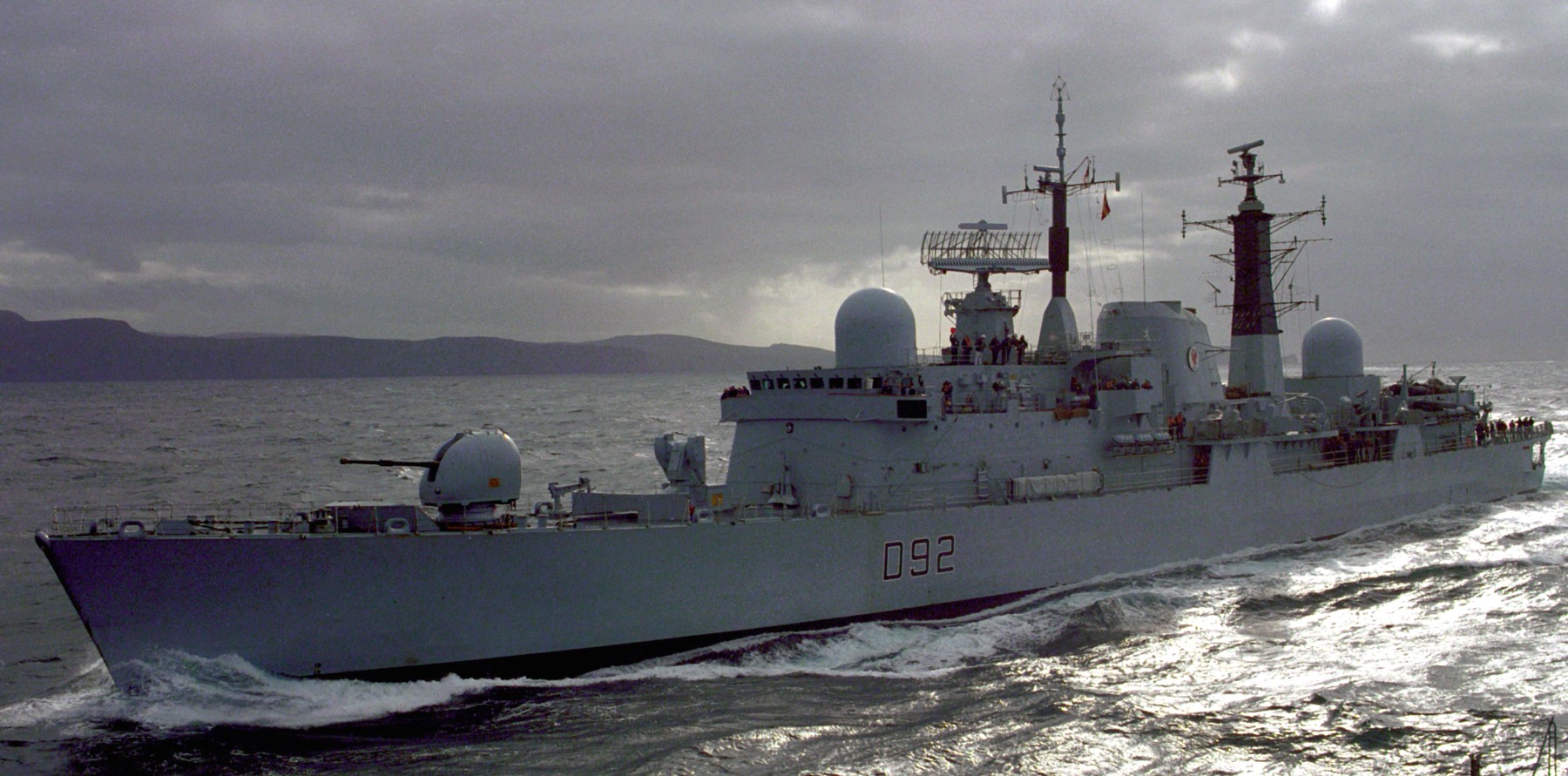 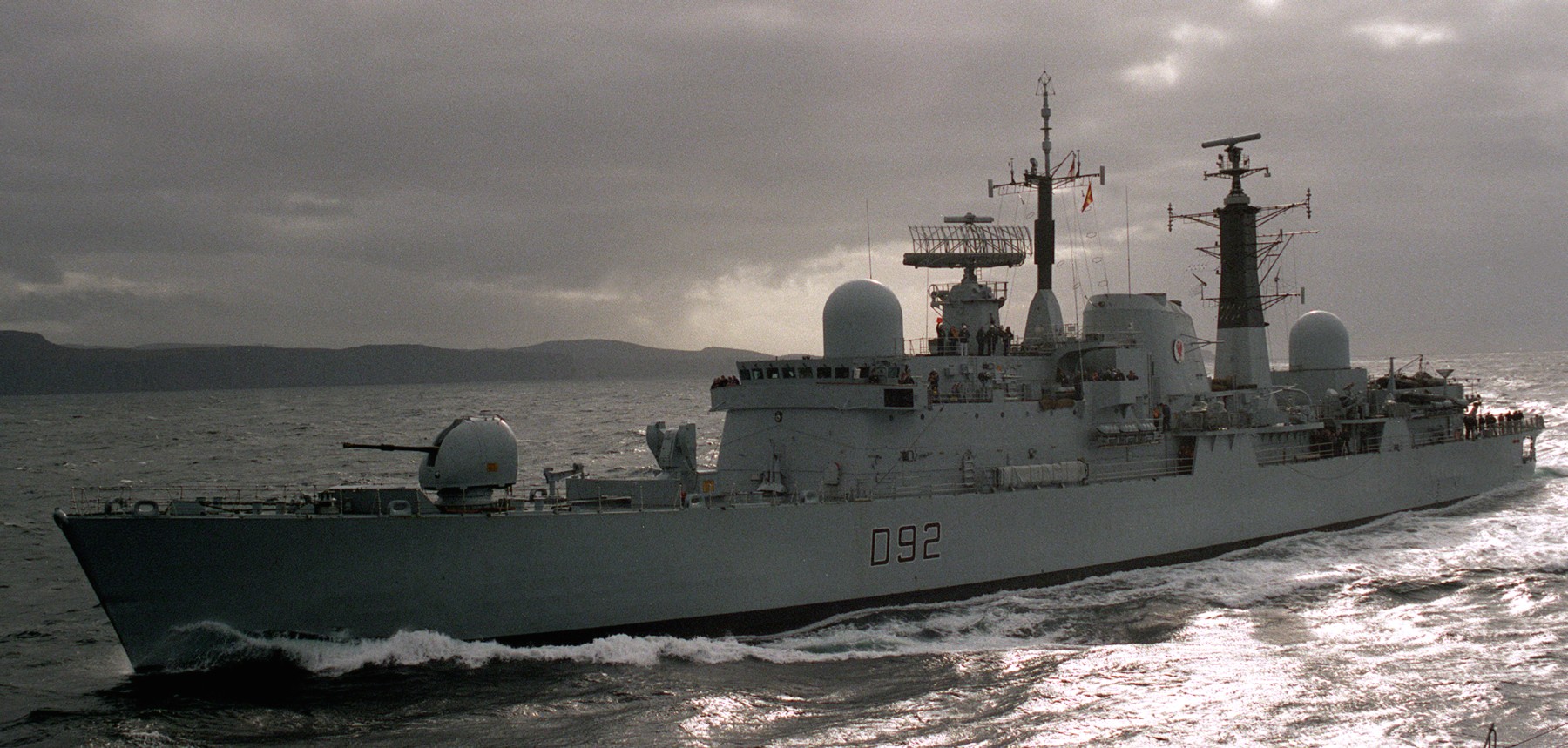 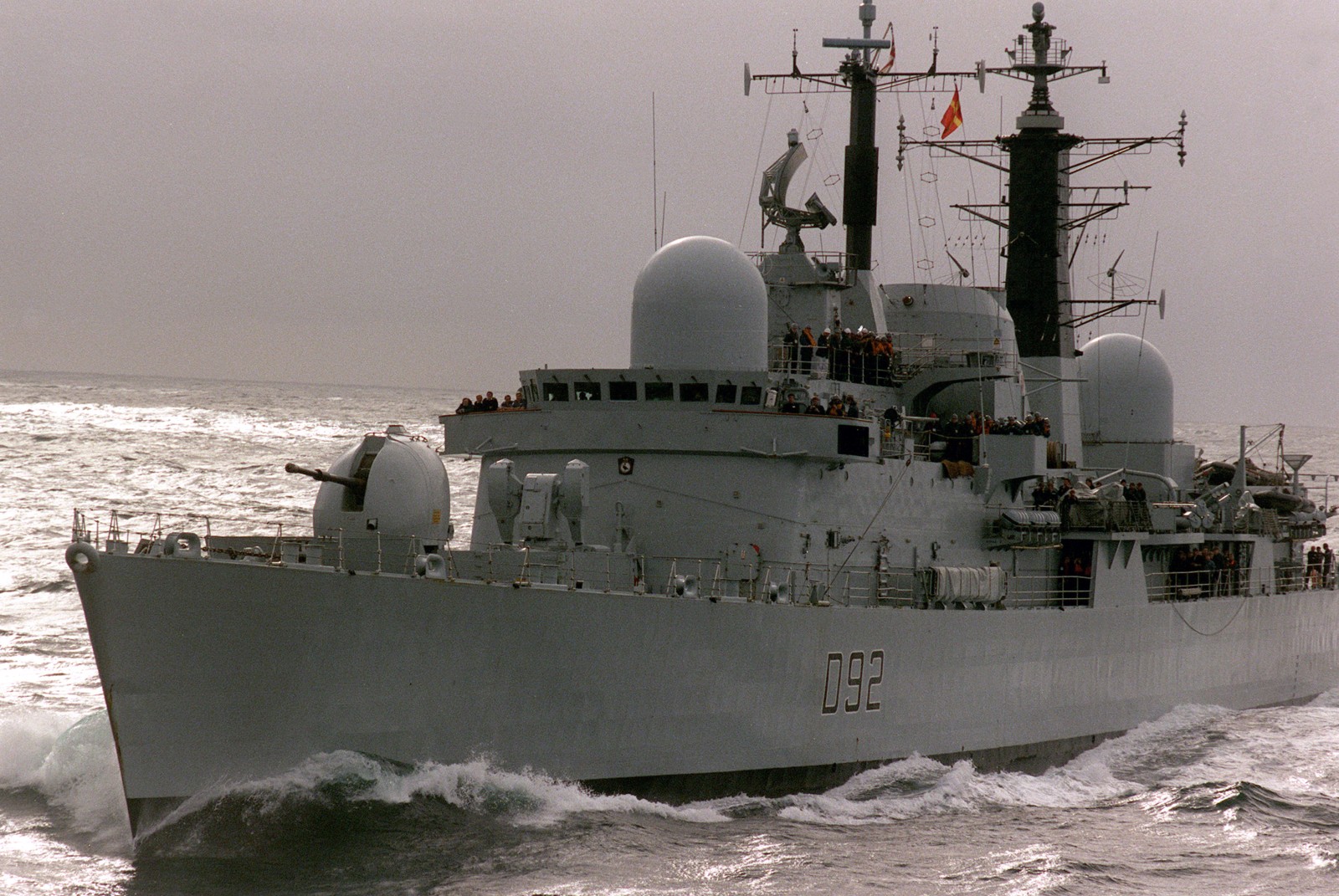 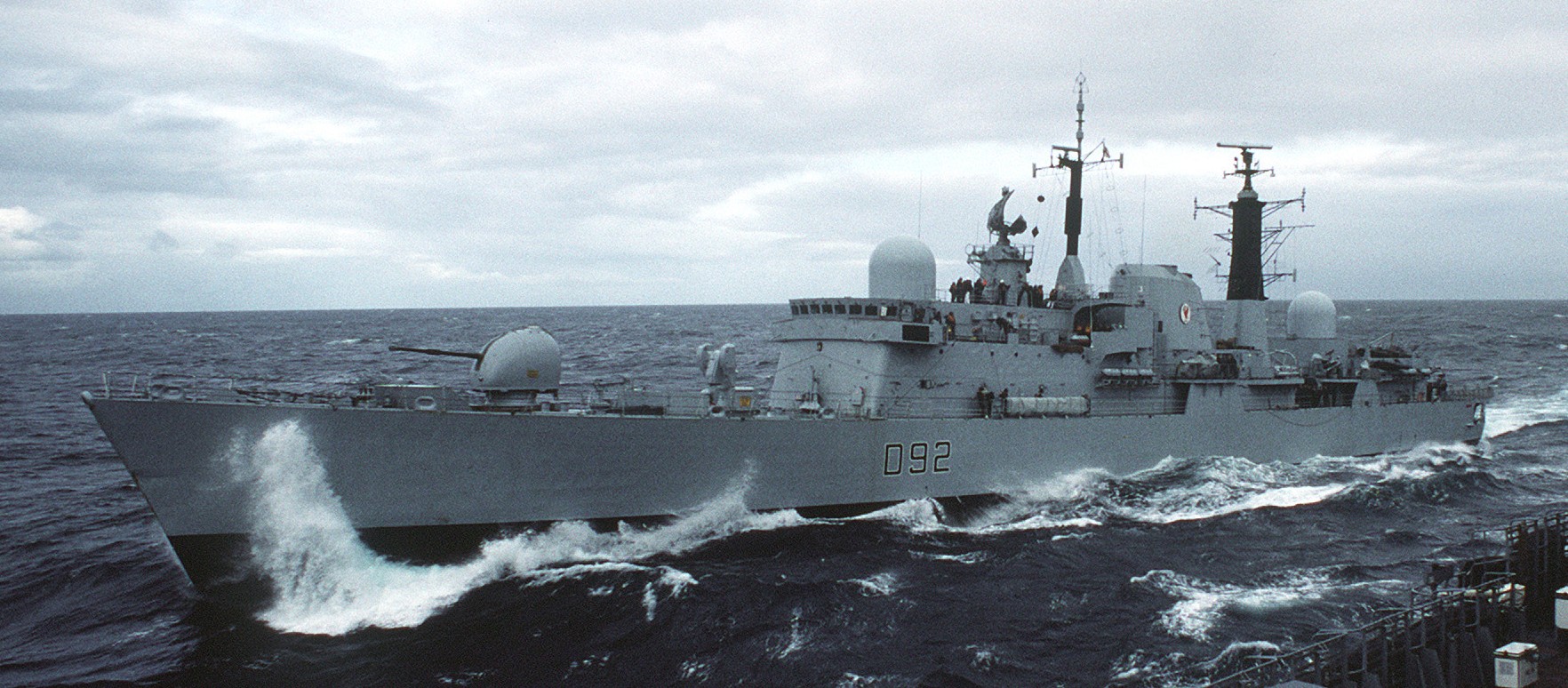 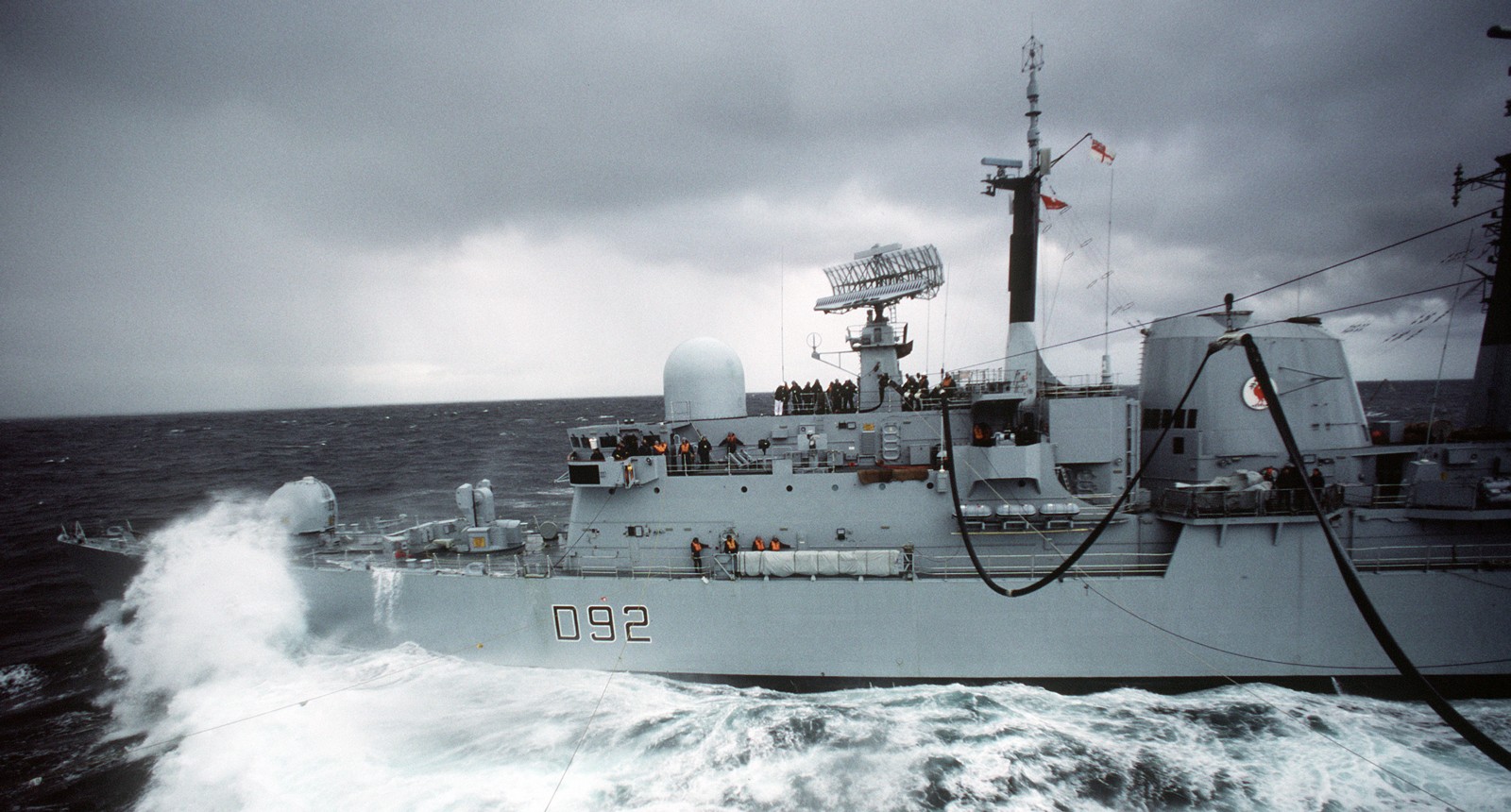 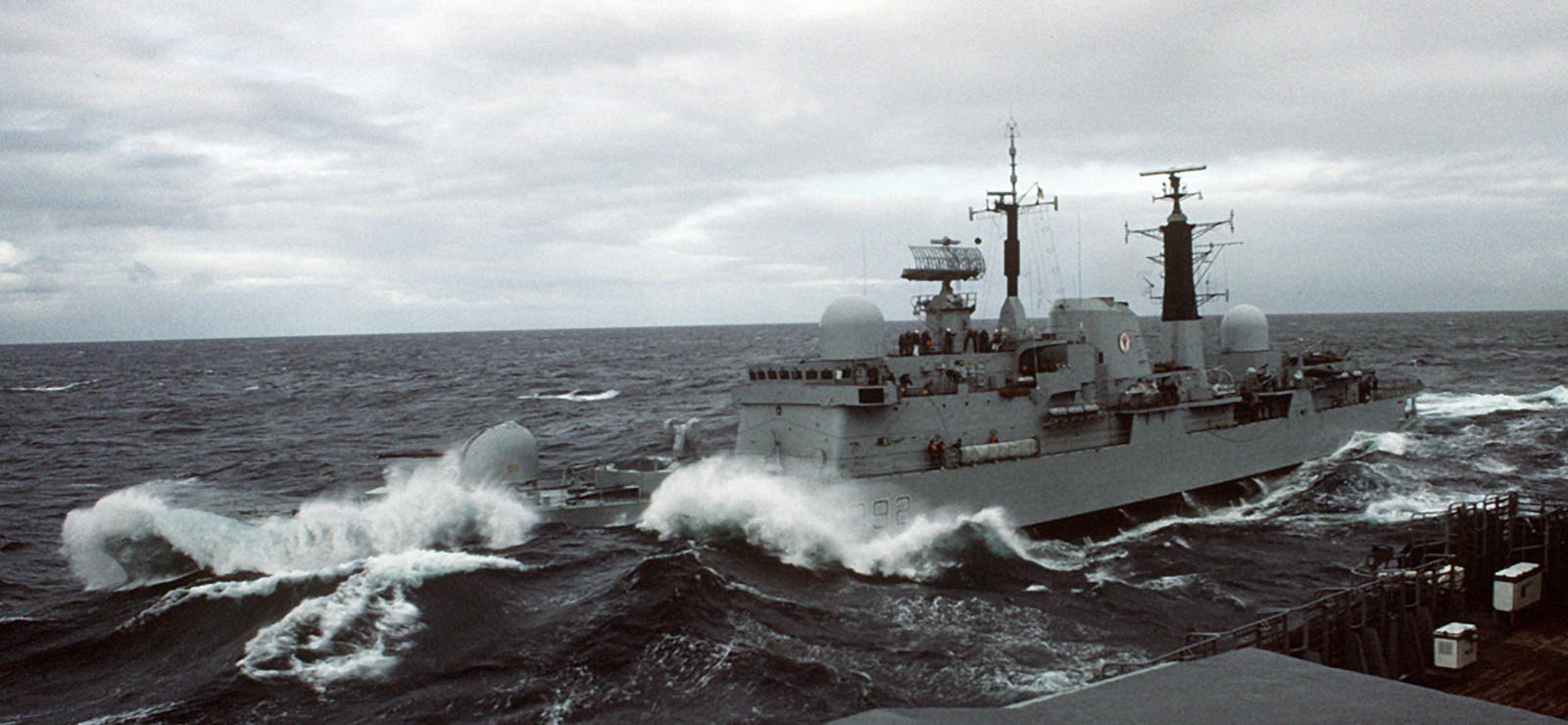 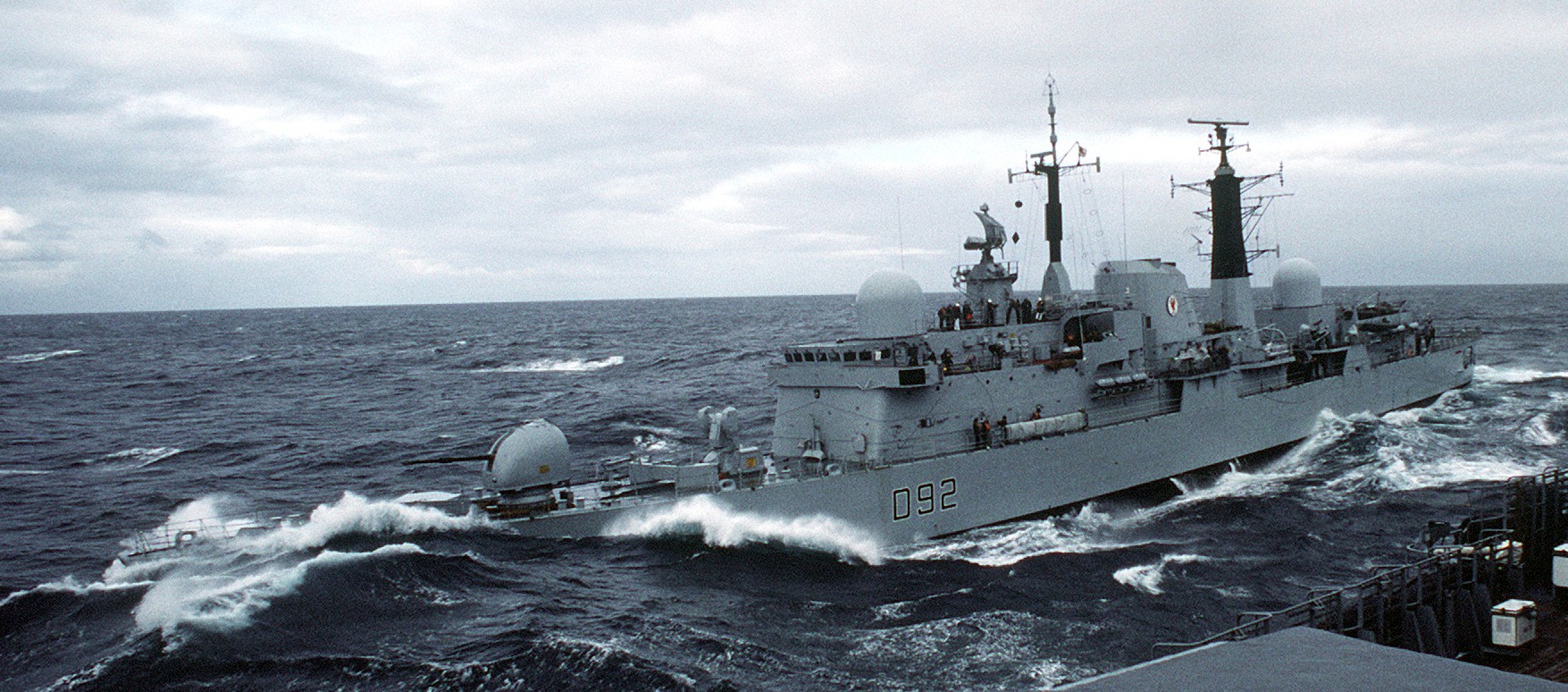 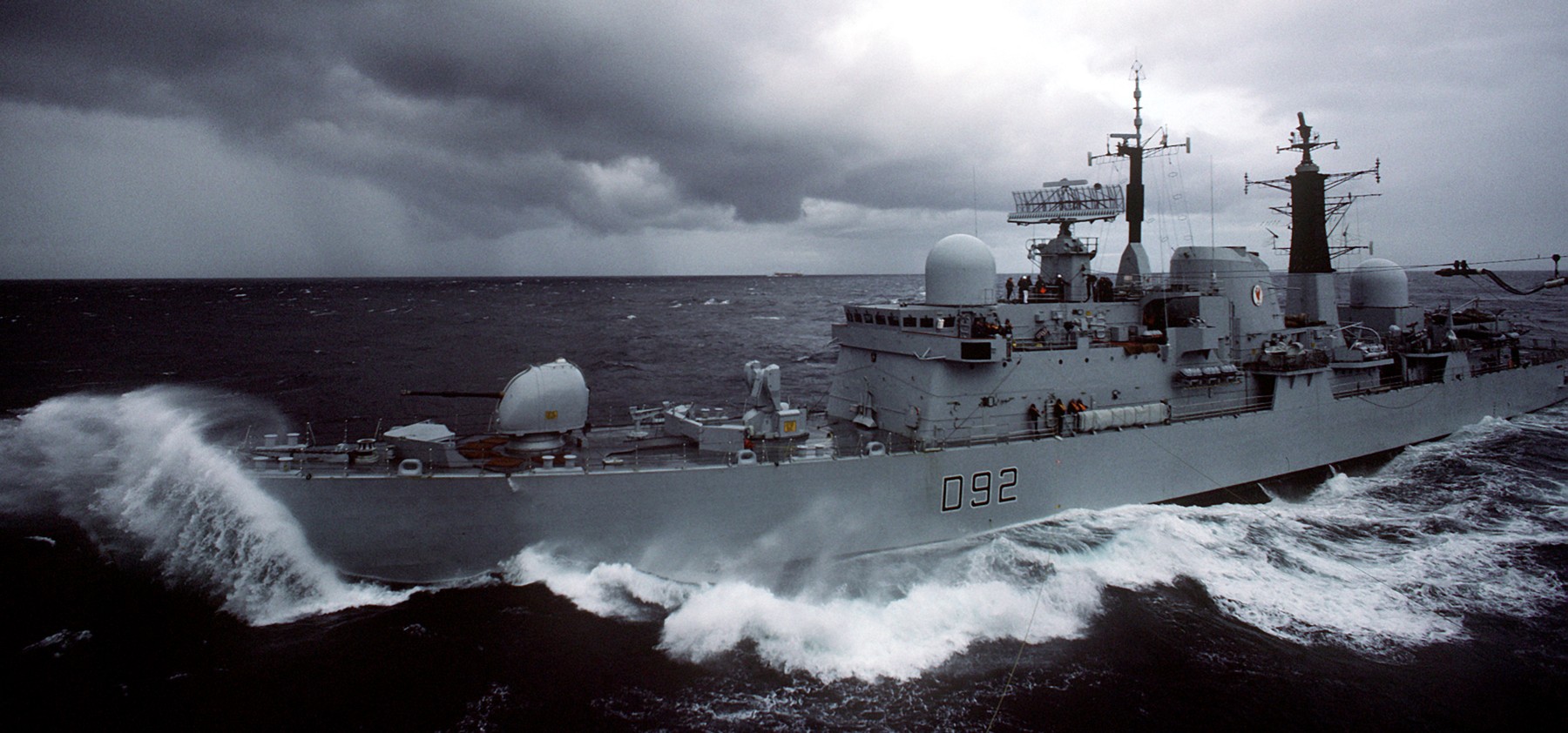 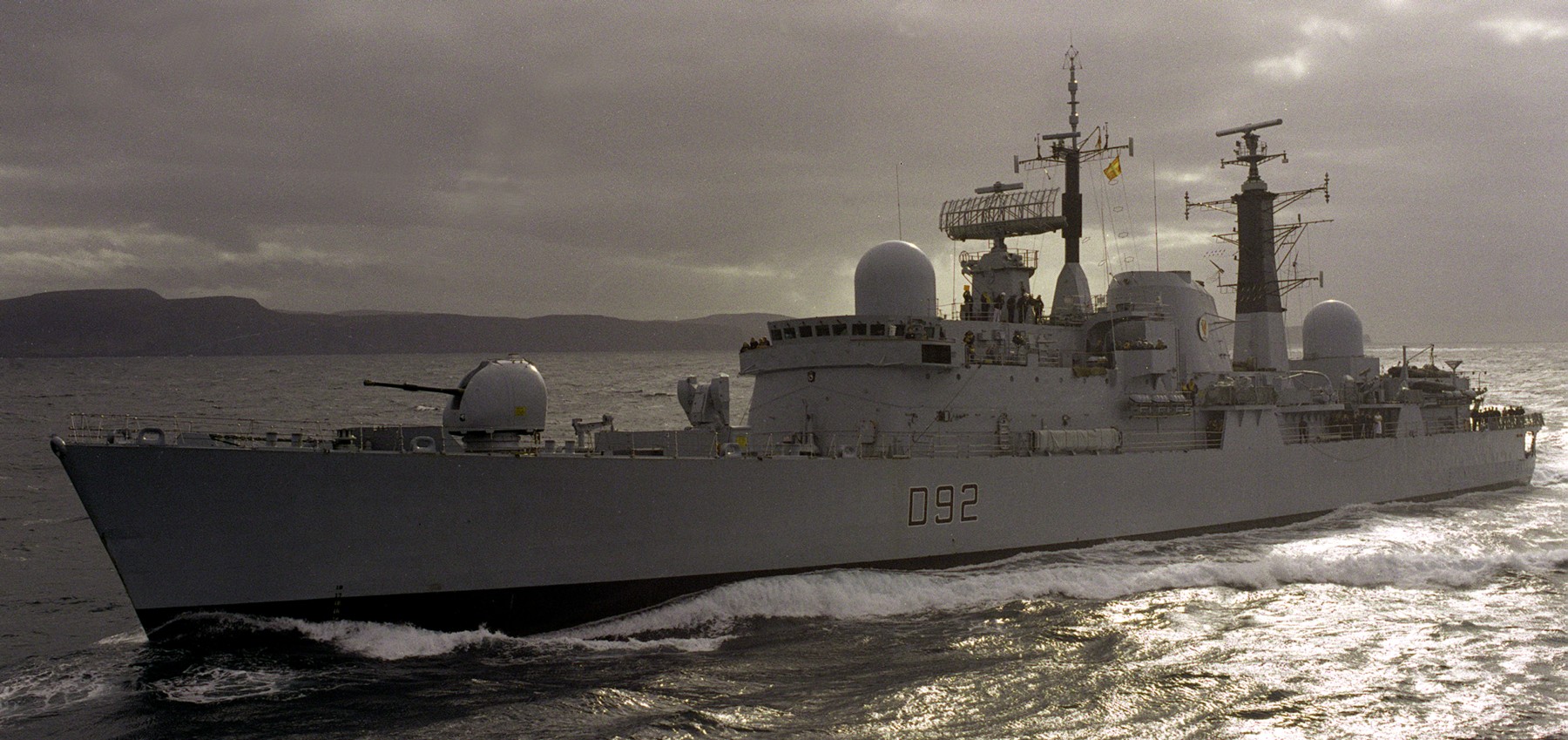 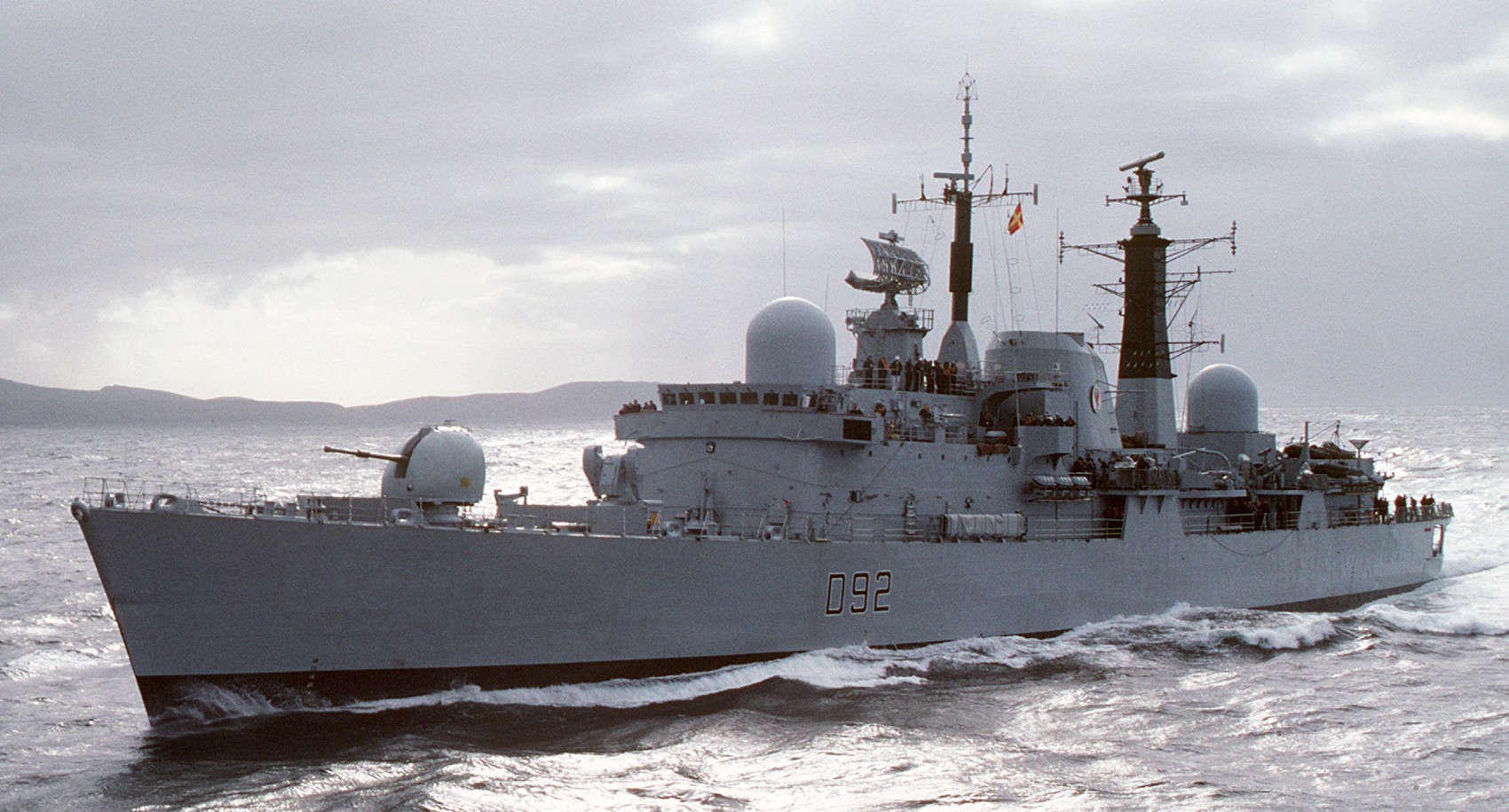 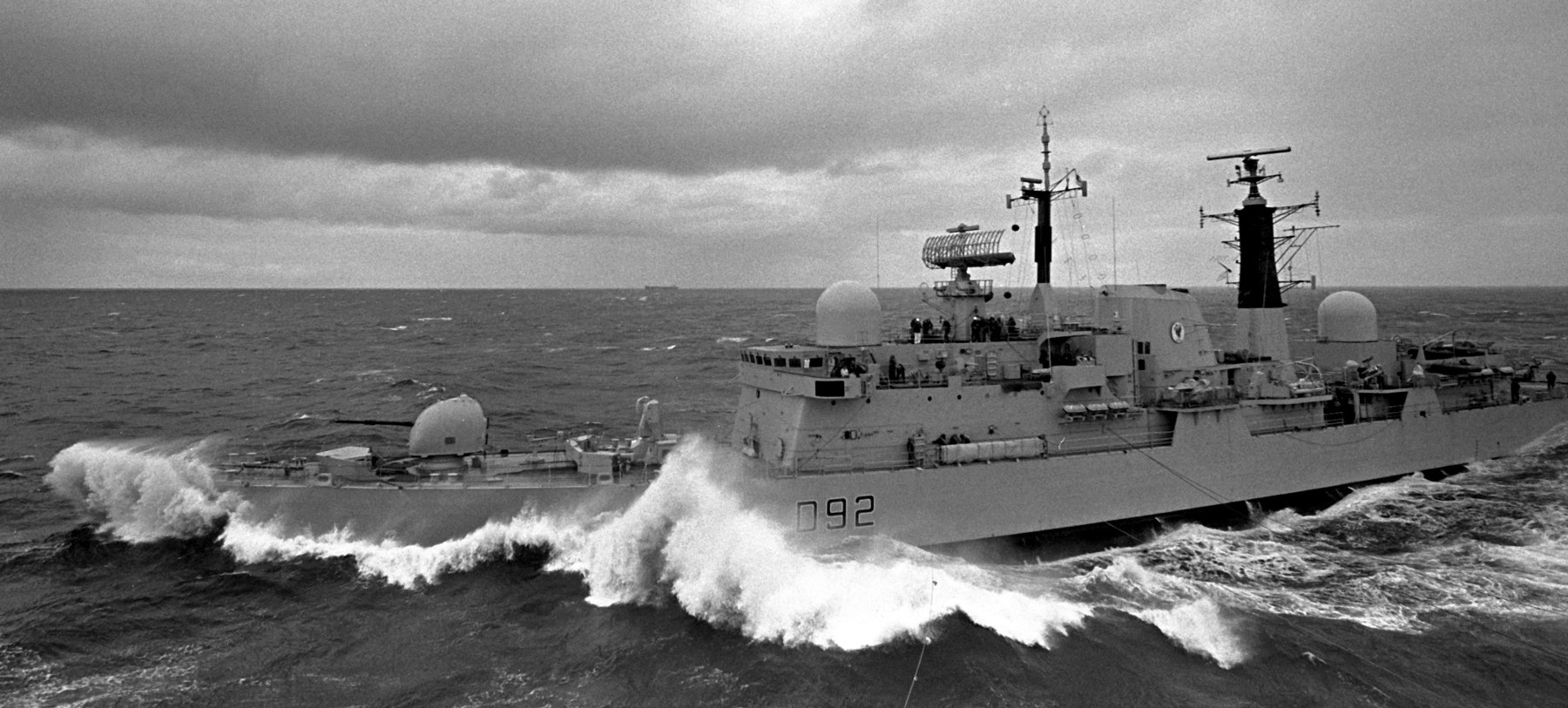 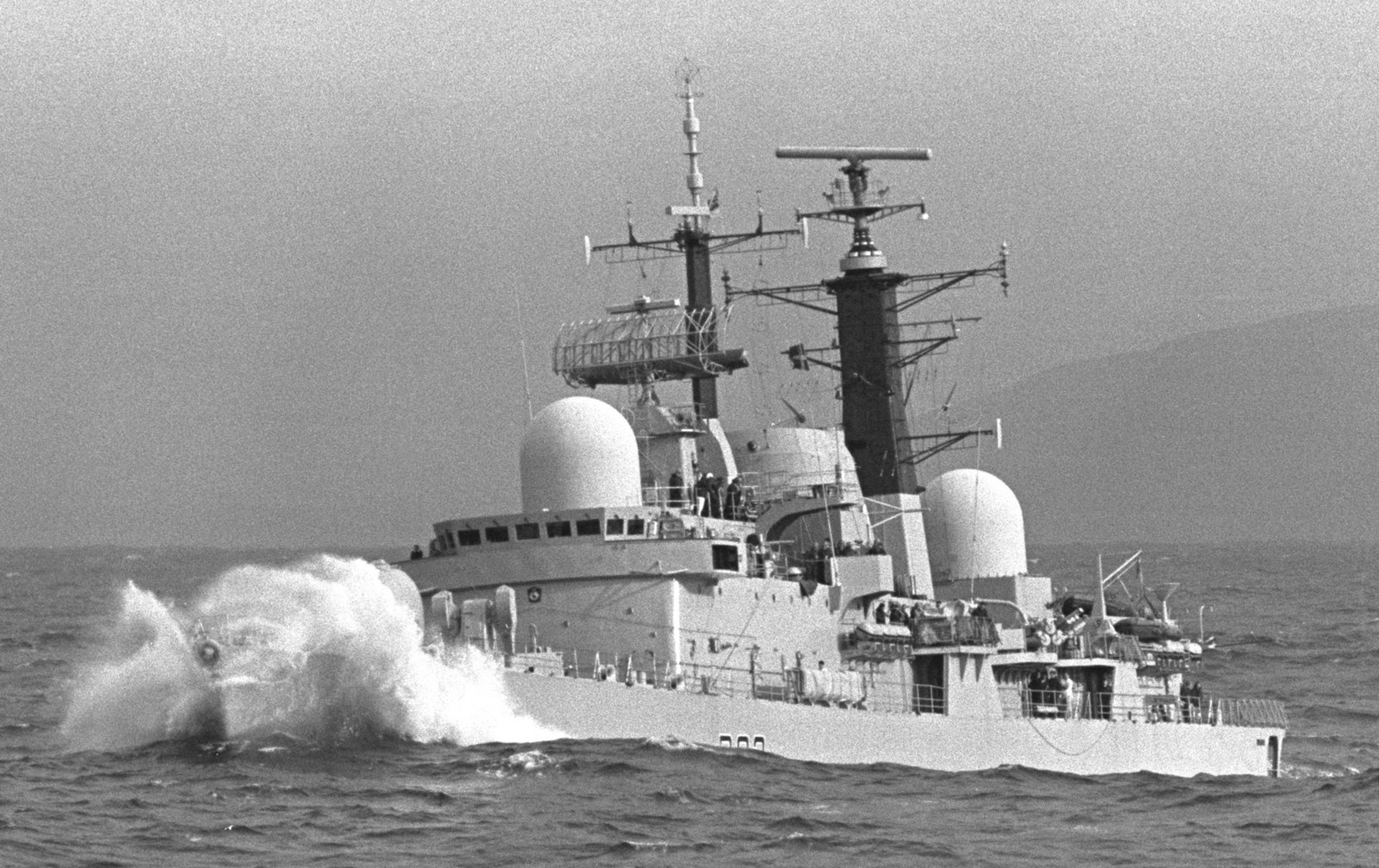 |
|
|
|
|
|
HMS Liverpool (D 92): HMS Liverpool was a Type 42 destroyer of the Royal Navy. She was built by Cammell Laird in Birkenhead and launched on 25 September 1980 by Lady Strathcona, wife of Euan Howard, the then Minister of State for Defence. Liverpool was the last Type 42 Batch 2 in service. Operational history: Liverpool was taken up by the Royal Navy in April 1982 from Cammell Laird. After an accelerated trials period sailed for the South Atlantic in early June 1982. Though Liverpool did not see active service in the Falklands Conflict, she remained on station for the next six months before returning to the UK. Liverpool fired what is believed to be the first salvo of Sea Dart missiles in well over a decade, along with possibly the second only salvo ever. The firing took place approximately 250 miles (400 km) south-west of the Isles of Scilly on 8 September 2002, against a sea skimming target to demonstrate the effectiveness of the Sea Dart missile and Liverpool's systems following a 12-month refit at Rosyth Dockyard. She was part of Naval Task Group 03 (NTG03), intended to take part in exercises in the Far East as part of the Five Power Defence Arrangement. The task force was, instead, sent to the Persian Gulf where they took part in the 2003 Iraq War. In 2005, Liverpool was sent to the Caribbean, where her duties included patrols to crack down on drug smuggling. In 2008, 18 sailors onboard tested positive for cocaine in a routine drug test. She entered refit in 2009. On returning to service in 2010, Liverpool acted as an escort to fleet flagship Ark Royal's task group during a four-month deployment to the United States and Canada as part of Exercise Auriga. Role in the Evacuation of Montserrat: After the eruption of the Soufriere Hills Volcano in 1995, the destroyer played a vital role in the evacuation of Montserrations to nearby islands as part of an effort which saw 7,000 people leave the island for places such as Antigua and Barbuda (a 30-mile (48 km) distance, which was impossible by aircraft at the time due to the destruction of the Blackburne International airport). Operation Unified Protector: In late March 2011, Liverpool was ordered to the Mediterranean to relieve Type 22 frigate Cumberland as the Royal Navy's contribution to Operation Unified Protector, NATO's naval blockade of Libya during the country's civil war. On 18 April, she intercepted the vessel MV Setubal Express heading for Tripoli, conducting a boarding party search with her own boarding party and finding trucks of potential use to the Gaddafi regime. The merchant vessel was ordered to divert to Salerno in Italy. On 12 May 2011, while engaged in surveillance operations off the coast of the rebel-held Libyan city of Misrata, Liverpool came under fire from a shore battery, making her the first Royal Navy warship to be deliberately targeted since the Falklands War. Liverpool had been tasked with other NATO warships, to intercept small, high-speed inflatable craft spotted approaching the port of Misrata, the type which had been used previously to lay mines in the Port of Misrata. Libyan rocket artillery on the coast fired an inaccurate salvo of rockets at Liverpool. Liverpool returned fire with her 4.5 inch main gun, silencing the shore battery, in the Royal Navy's first use of the weapon since the 2003 invasion of Iraq. On 28 June 2011, Liverpool used her main gun to fire warning shots at pro-Gaddafi maritime forces moving along Libya's Mediterranean coast just west of the city of Misrata, amid concerns a threat was posed to civilians due to recent repeated attempts to mine the harbour. After initially ignoring the first shell, a further three were fired and the vessels were forced to return to their port of departure. On the morning of 3 August 2011, several rockets were fired at Liverpool. She returned fire with her 4.5 inch main gun. The attack came after the ship had fired a barrage of illumination rounds in support of an air attack on the stronghold of Zliten. On 16 August 2011, Liverpool was involved in the most intense shore-bombardment of the war. Liverpool had been tasked by a patrol aircraft to fire illumination rounds over the city of Zlitan. While conducting this mission, Liverpool came under fire from a Loyalist shore-battery. Liverpool responded by firing three rounds from her 4.5 inch gun, silencing the battery. Later on the same day, a patrol aircraft spotted a large pro-Gaddafi vehicle convoy carrying weapons and ammunition. Liverpool fired 54 shells from her 4.5 inch gun at the convoy, destroying or severely damaging many of the vehicles. During the ensuing chaos on the ground, NATO aircraft destroyed the remainder of the convoy. Liverpool returned from Operation Unified Protector on 7 November 2011, entering Portsmouth Harbour after more than seven months of operations off Libya. She had fired over 200 rounds from her main gun during the conflict. On 7 February 2012 Liverpool escorted a Russian task group centred on the aircraft carrier Admiral Kuznetsov from the Channel, off south-west England, to the seas off south-west Ireland. The task group of two warships and five support ships were making their way home to the Northern and Baltic Fleets of the Russian Navy. In March 2012 Liverpool took part in Exercise 'Cold Response', a NATO winter war games exercise being conducted in northern Norway, where she acted as an escort to the helicopter carrier HMS Illustrious and the amphibious assault ship HMS Bulwark. The ship made her final visit to the city of Liverpool on 29 February 2012 where on Saturday 3 March and Sunday 4 March 2012, the general public were invited on deck to look around the ship. She was formally decommissioned on 30 March 2012. source: wikipedia |
|
|
|
|
|
|
|
|
patches |
|
|
|
|
|
|
seaforces.org
|
Royal
Navy start page
| |
|
